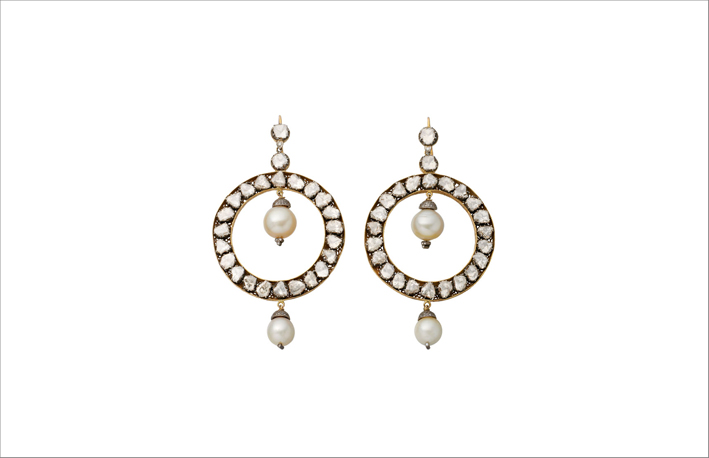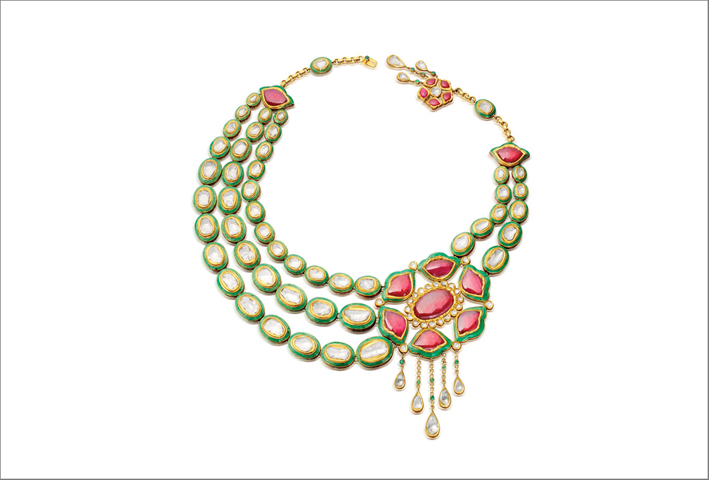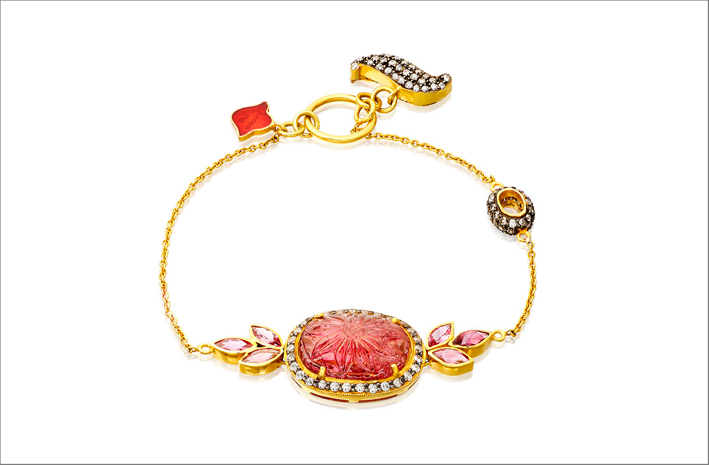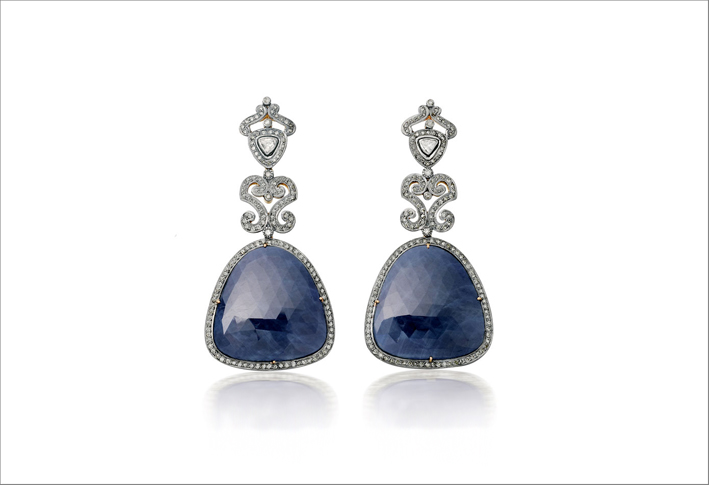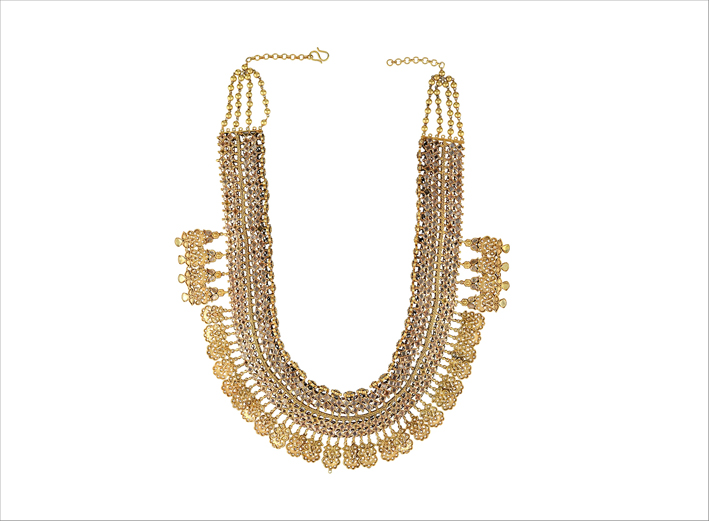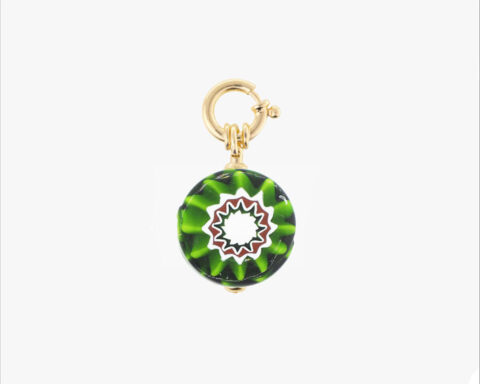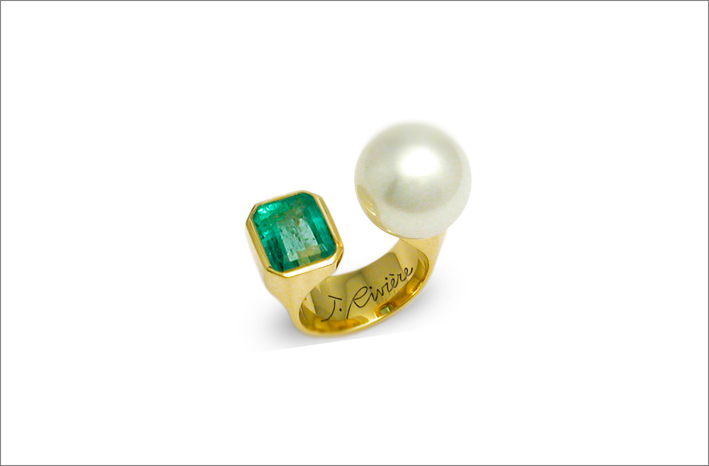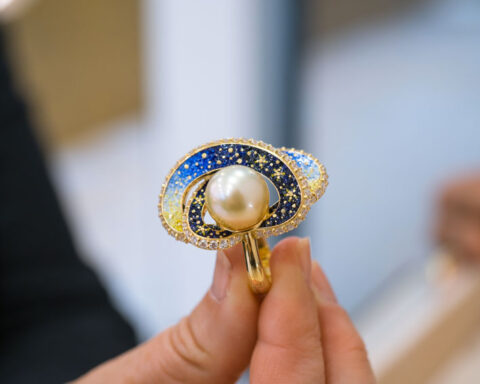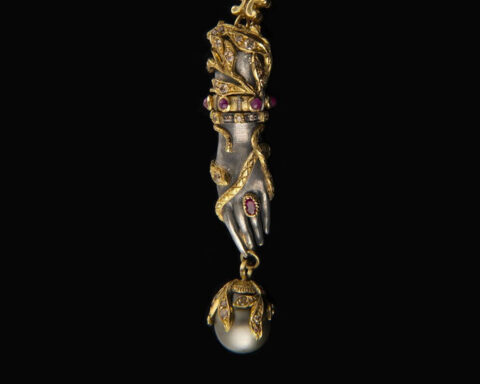The extraordinary jewels of Amrapali, the Indian tradition revisited in a modern key ♦ ︎
It takes its name from a famous royal courtesan, Amrapali, who lived in the Vaishali Republic (in the current Bihar, east of India) around 500 BC. As an excessively easy woman (to put it mildly), Amrapali after a meeting with Buddha turned to spirituality and became a faithful follower of the Master. To this mythical figure, Rajiv Arora and Rajesh Ajmera, founders of the Maison Amrapali, were inspired at the end of the Seventies. Amrapali is now directed by Tarang Arora, daughter of the founder, gemmologist and designer.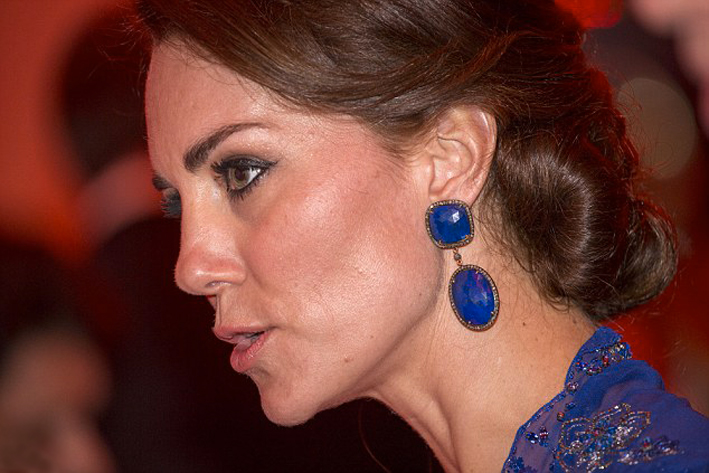
Also appreciated by Kate Middleton, the company based in Jaipur is one of the examples of the skill and fantasy of jewelry in India.
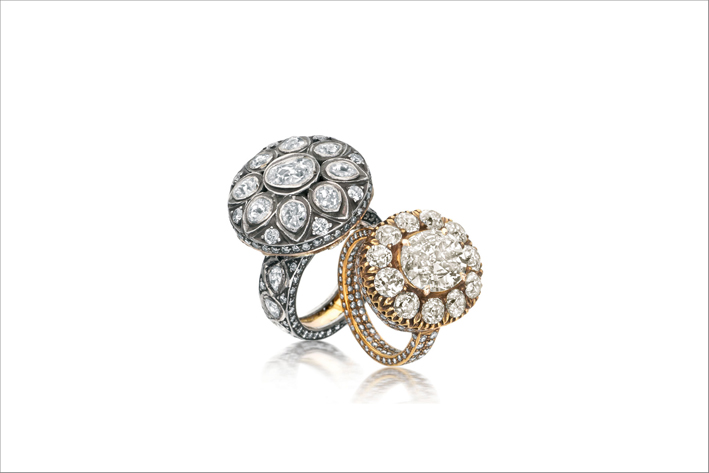
Tarang Arora grew up in Jaipur, but in 2002 she moved to London to study gemology. It is she who judges all aspects of the brand, from the procurement of stones to the design of the collections. Today Amrapali employs about 1,600 to 1,800 people in the laboratory in Jaipur, but sometimes up to 3,000. The Amrapali style can be called ethnic chic, but tradition is also filtered through a very modern design.
Jaipur, not by chance, is the capital of Indian jewelry as well as Rajasthan.

And Amrapali over time has developed a unique creative capacity: sells jewelry that cost from only $ 10 to over 1 million. Who wants to realize the extraordinary ability in the processing of jewelry can go to visit a museum in Jaipur that collects the private collection of 2,500-3,000 historical pieces collected by the founders of Amrapali. And not just Rajasthan: India has an incredible variety of costumes and shapes for jewels too. Cosimo Muzzano

